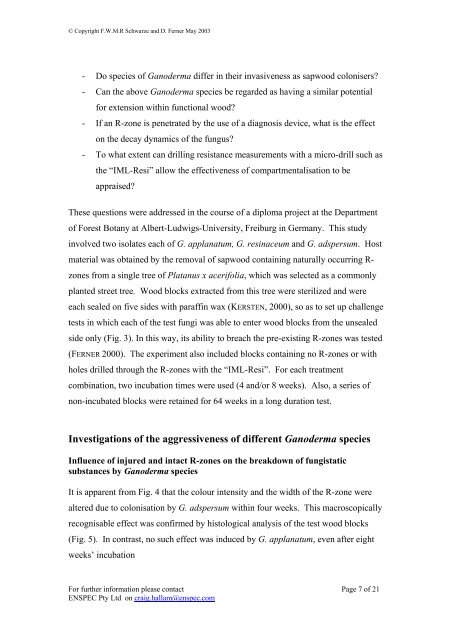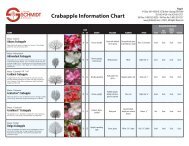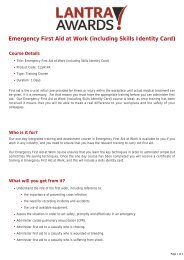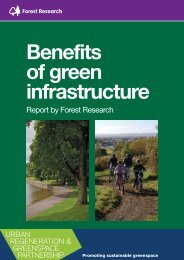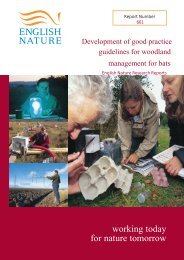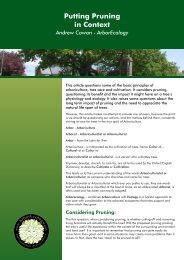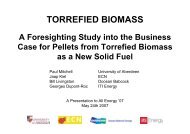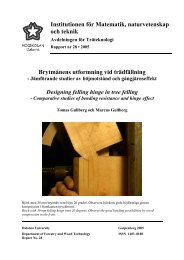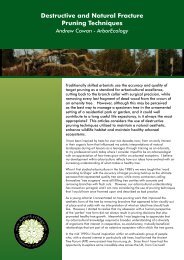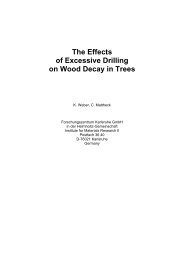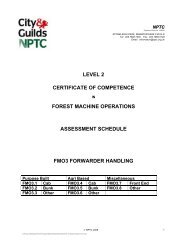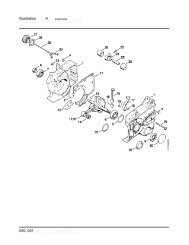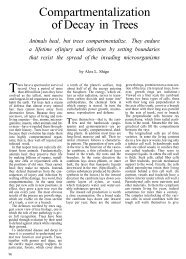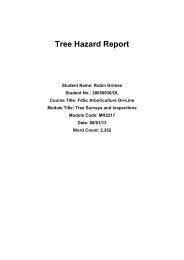Ganoderma on Trees.pdf - Arbtalk
Ganoderma on Trees.pdf - Arbtalk
Ganoderma on Trees.pdf - Arbtalk
You also want an ePaper? Increase the reach of your titles
YUMPU automatically turns print PDFs into web optimized ePapers that Google loves.
© Copyright F.W.M.R Schwarze and D. Ferner May 2003- Do species of <str<strong>on</strong>g>Ganoderma</str<strong>on</strong>g> differ in their invasiveness as sapwood col<strong>on</strong>isers?- Can the above <str<strong>on</strong>g>Ganoderma</str<strong>on</strong>g> species be regarded as having a similar potentialfor extensi<strong>on</strong> within functi<strong>on</strong>al wood?- If an R-z<strong>on</strong>e is penetrated by the use of a diagnosis device, what is the effect<strong>on</strong> the decay dynamics of the fungus?- To what extent can drilling resistance measurements with a micro-drill such asthe “IML-Resi” allow the effectiveness of compartmentalisati<strong>on</strong> to beappraised?These questi<strong>on</strong>s were addressed in the course of a diploma project at the Departmentof Forest Botany at Albert-Ludwigs-University, Freiburg in Germany. This studyinvolved two isolates each of G. applanatum, G. resinaceum and G. adspersum. Hostmaterial was obtained by the removal of sapwood c<strong>on</strong>taining naturally occurring R-z<strong>on</strong>es from a single tree of Platanus x acerifolia, which was selected as a comm<strong>on</strong>lyplanted street tree. Wood blocks extracted from this tree were sterilized and wereeach sealed <strong>on</strong> five sides with paraffin wax (KERSTEN, 2000), so as to set up challengetests in which each of the test fungi was able to enter wood blocks from the unsealedside <strong>on</strong>ly (Fig. 3). In this way, its ability to breach the pre-existing R-z<strong>on</strong>es was tested(FERNER 2000). The experiment also included blocks c<strong>on</strong>taining no R-z<strong>on</strong>es or withholes drilled through the R-z<strong>on</strong>es with the “IML-Resi”. For each treatmentcombinati<strong>on</strong>, two incubati<strong>on</strong> times were used (4 and/or 8 weeks). Also, a series ofn<strong>on</strong>-incubated blocks were retained for 64 weeks in a l<strong>on</strong>g durati<strong>on</strong> test.Investigati<strong>on</strong>s of the aggressiveness of different <str<strong>on</strong>g>Ganoderma</str<strong>on</strong>g> speciesInfluence of injured and intact R-z<strong>on</strong>es <strong>on</strong> the breakdown of fungistaticsubstances by <str<strong>on</strong>g>Ganoderma</str<strong>on</strong>g> speciesIt is apparent from Fig. 4 that the colour intensity and the width of the R-z<strong>on</strong>e werealtered due to col<strong>on</strong>isati<strong>on</strong> by G. adspersum within four weeks. This macroscopicallyrecognisable effect was c<strong>on</strong>firmed by histological analysis of the test wood blocks(Fig. 5). In c<strong>on</strong>trast, no such effect was induced by G. applanatum, even after eightweeks’ incubati<strong>on</strong>For further informati<strong>on</strong> please c<strong>on</strong>tact Page 7 of 21ENSPEC Pty Ltd <strong>on</strong> craig.hallam@enspec.com


